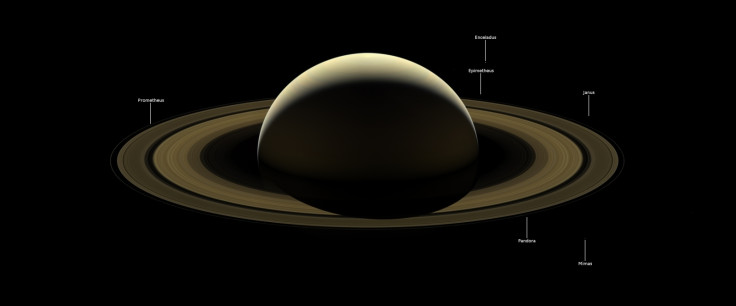Nasa bids Cassini farewell with the release of its last photo of Saturn and icy rings
The image is mosaic of around 42 shots Cassini spacecraft took during the last leg of its mission, Nasa said.
Before plunging into Saturn's atmosphere on 15 September, Cassini spacecraft took a last look at the planet and captured a series of images using its wide angle camera. Now, in a fitting farewell to the spacecraft's 13-year long mission, Nasa has combined those photographs to release one final shot of the gas giant and its gorgeous icy rings.
The image, as the agency describes, is mosaic of as many as 42 shots of a total of 80 wide-angle images that Cassini took during the last leg of its mission. Taken with red, green and blue spectral filters, these images cover the entire planet and its rings from one end to another and have been stitched together into one natural colour shot.
According to Nasa, the picturesque view also includes Saturn's six famous moons — Prometheus, Pandora, Janus, Epimetheus, Mimas, and Enceladus — and numerous stars, but they're too faint to see easily.
The images were taken when Cassini was approximately 1.1 million kilometres from Saturn, on its final approach to the planet. The agency says Cassini's imaging team had been planning this farewell view of Saturn for years.
"For 37 years, Voyager 1's last view of Saturn has been, for me, one of the most evocative images ever taken in the exploration of the solar system," said Carolyn Porco, former Voyager imaging team member and Cassini's imaging team leader at the Space Science Institute in Boulder, Colorado.
"In a similar vein, this 'Farewell to Saturn' will forevermore serve as a reminder of the dramatic conclusion to that wondrous time humankind spent in intimate study of our Sun's most iconic planetary system."

After launching in 1997, Cassini orbited Saturn between 2004 and September 2017. The spacecraft not only produced some brilliant shots of the gas giant, but also got useful insights into its rings and moons before ending its mission with a death dive into its atmosphere.
The Cassini-Huygens mission has been a cooperative project of Nasa, the European Space Agency (ESA) and the Italian Space Agency.





